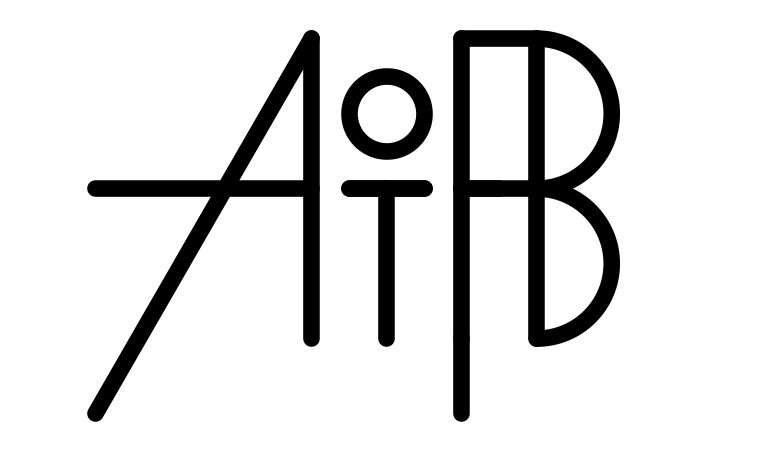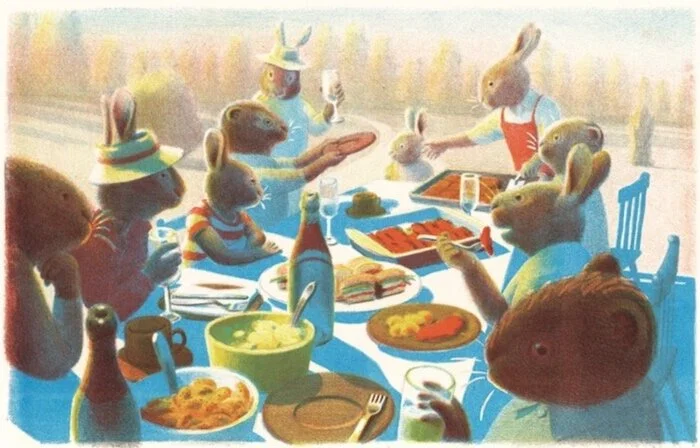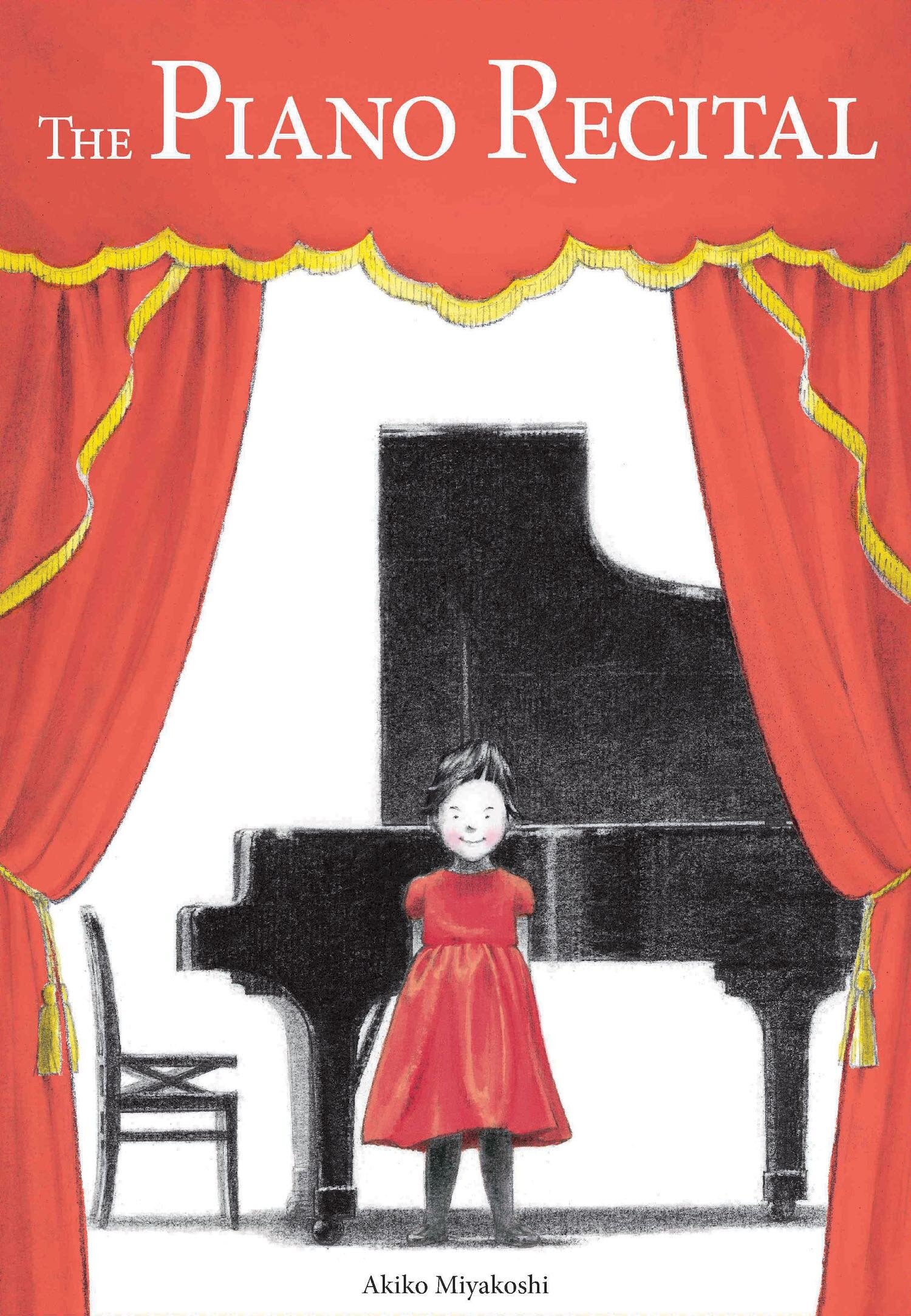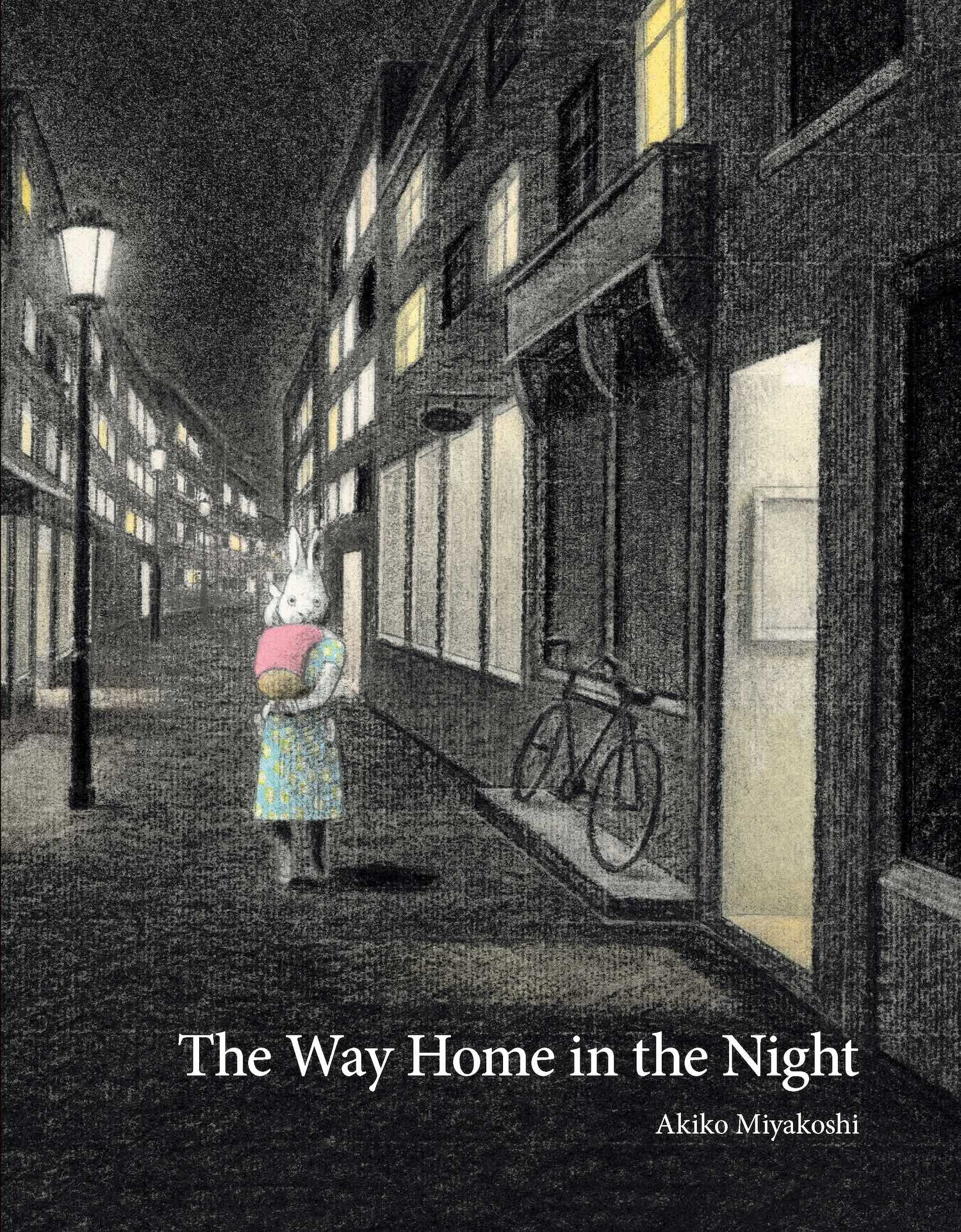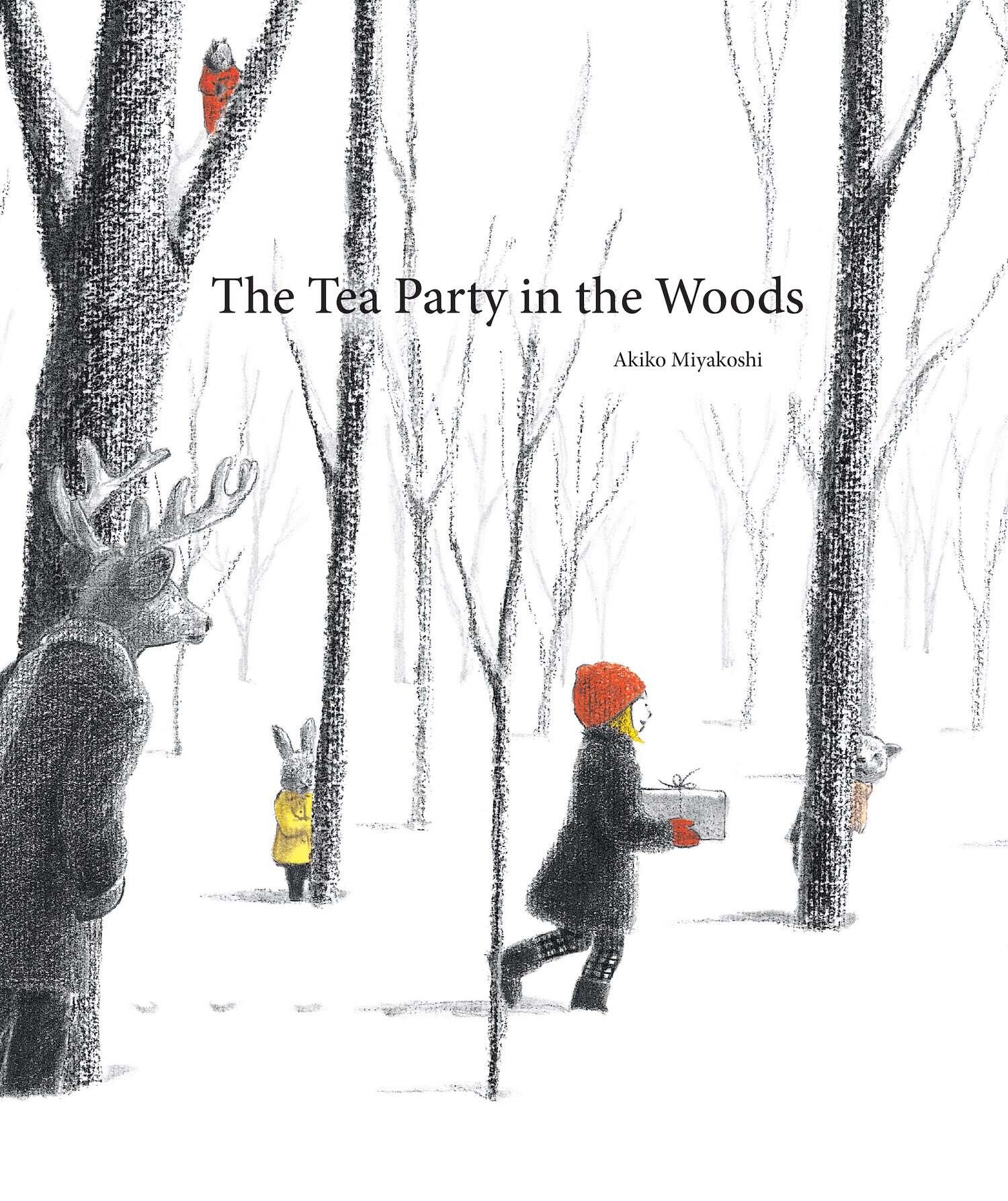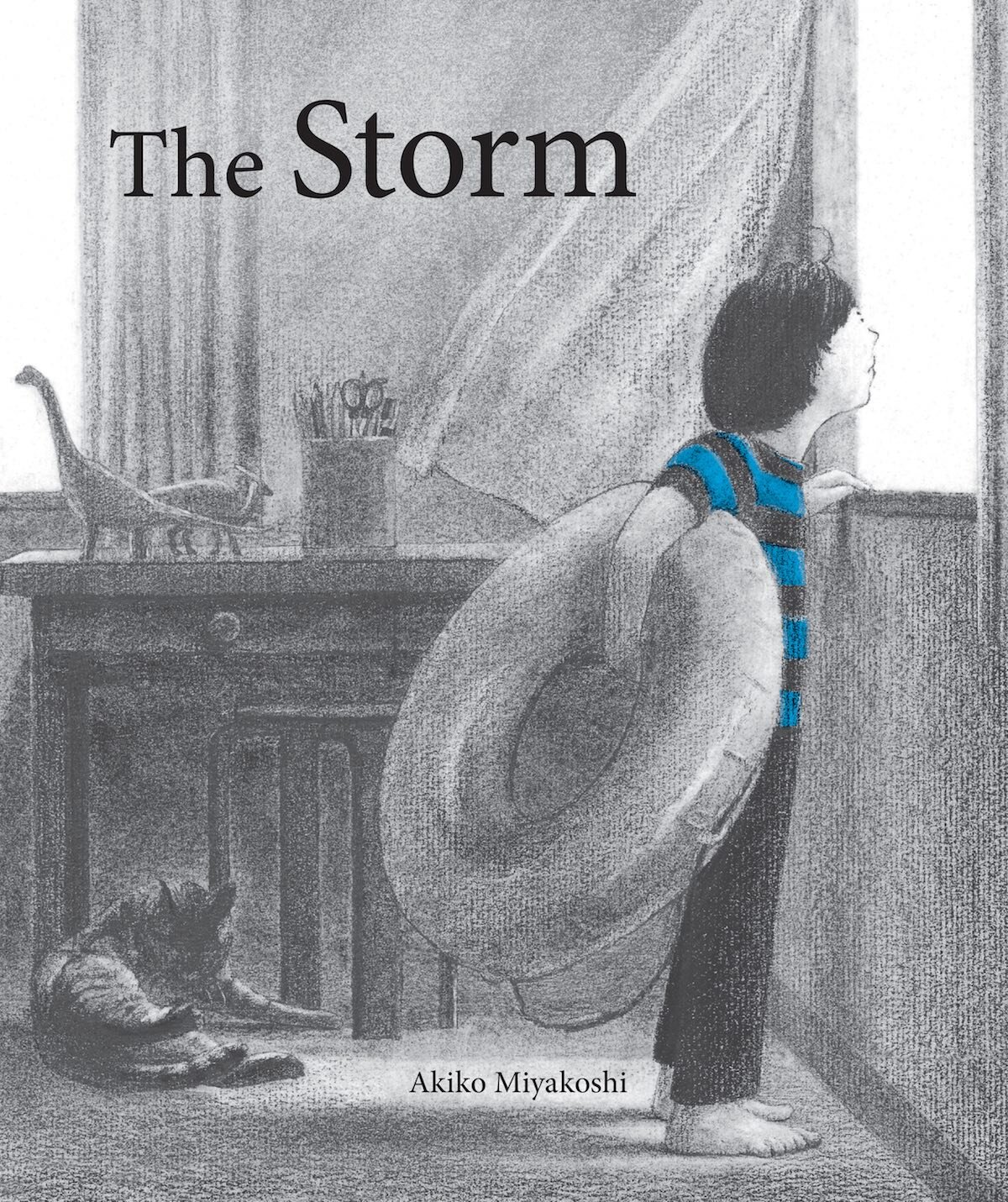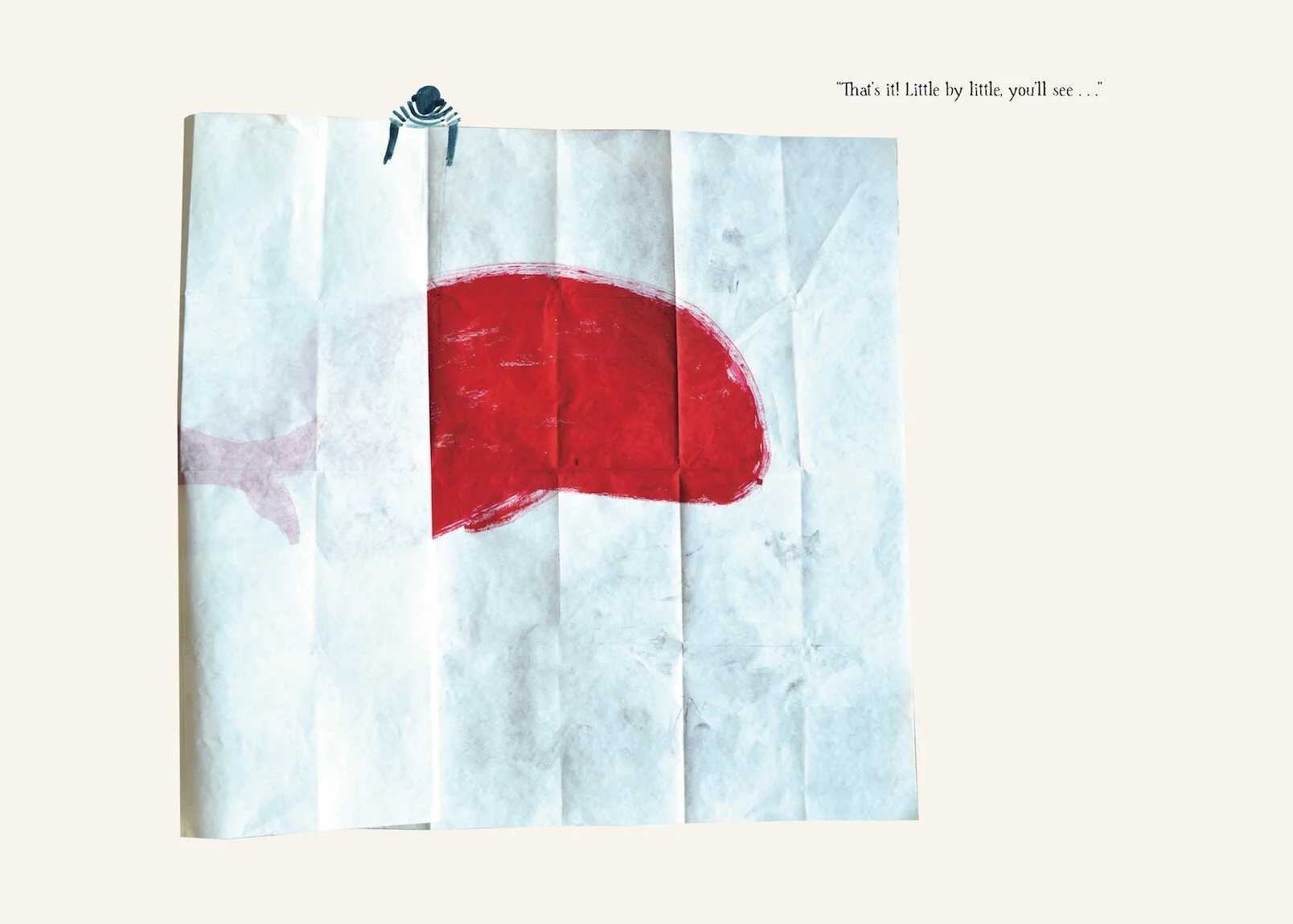An Interview with Akiko Miyakoshi
Akiko Miyakoshi
October 1, 2020
We interviewed Akiko Miyakoshi, award-winning illustrator and author of children’s picture books. Her first book, The Storm, won the Nissan Children’s Storybook and Picture Book Grand Prix. Miyakoshi lives and works in Tokyo, Japan.
Cover of I Dream of a Journey, Akiko Miyakoshi
In I Dream of a Journey, the perspective, looking down on the characters on several spreads, gives a unique view. What goes into the decision of where to position your reader's viewpoint?
I like a cinematic viewpoint. Because I believe the unique viewpoint gives pictures a power and a presence.
For example, a bird's-eye view gives a wider range of perspective which shows the whole scene. Or a looking-up angle allows me to draw more details of an imaginary world. Every time I draw, I try to make a few versions of rough sketches to find the best way to show it effectively. I like the artworks of Chris Van Allsburg, which inspired me a lot.
Interior spread from I Dream of a Journey, Akiko Miyakoshi
Preliminary sketch from I Dream of a Journey, Akiko Miyakoshi
Interior spread from I Dream of a Journey, Akiko Miyakoshi
Interior spread from I Dream of a Journey, Akiko Miyakoshi
Preliminary sketch from I Dream of a Journey, Akiko Miyakoshi
Interior spread from I Dream of a Journey, Akiko Miyakoshi
Your recent use of lithography for your illustrations, in place of charcoal, has opened up your color pallette. Can you describe its impact and the reasons behind your shift?
This book was done with lithography. I used to draw by wood charcoal and pencil and acrylic gouache. I still like both of those techniques. Lithography has beautiful color layering and I like it so much. These pictures in this book wouldn't have been created without doing lithography. I get many inspirations from the beautiful layering of colors. Lithography allows me to capture a lot of different kinds of lights and atmospheres.
Interior spread from I Dream of a Journey, Akiko Miyakoshi
Miyakoshi’s print studio
Will you use lithograph illustration for your next book?
Yes. I'm already starting it.
Miyakoshi’s print studio
Now, when travel around the world is limited, the idea of a journey is poignant. Several of your books have dealt with journeys of various sorts. Why is this theme important to you?
Journey inspires me all the time. I've been drawing about journey for many years. Each piece has a small story. I put the pieces in this book. So there are many memories and feelings in it. I have never thought about the reason why I like the theme of journey so much. But as I made this book, I asked it of myself again and again. That's the longing for the unknown world. That feeling attracts me strongly.
Cover of The Way Home in the Night, Akiko Miyakoshi
Interior spread from The Way Home in the Night, Akiko Miyakoshi
Interior spread from The Way Home in the Night, Akiko Miyakoshi
In several of your books, notably, The Way Home in the Night and I Dream of a Journey, you use only animals as your characters and they speak and act as people might. Is there a reason why you choose animals instead of people for these characters?
When I make a world, recently I prefer to choose animals. The first reason is simply I like to draw animals rather than humans. When human-specific characteristics such as nationalities, age, or gender don't play an important role in the picture book, setting animals as main characters is a good way to depict a fantasy world. I like to make universal characters and stories. I think it's easier for readers to become immersed in the story if animals are the main characters.
Interior spread from The Way Home in the Night, Akiko Miyakoshi
Interior spread from The Way Home in the Night, Akiko Miyakoshi
In other books, The Tea Party in the Woods and The Piano Recital, there are human characters but they are surrounded by animals. What drives this choice when creating your characters?
Creating a fantasy world is one of the privileges that picture books have, which will never be obsolete. And looking back to my childhood, I always had imaginary worlds and enjoyed them. I think that a lot of children imagine fantasy worlds in their heads that grown-ups never do in a normal life. So it would be nice if we adults as well can enjoyably experience fantasy worlds in picture books with children.
Cover of The Piano Recital, Akiko Miyakoshi
Interior spread from The Piano Recital, Akiko Miyakoshi
Interior spread from The Piano Recital, Akiko Miyakoshi
Interior spread from The Piano Recital, Akiko Miyakoshi
Interior spread from The Piano Recital, Akiko Miyakoshi
Speaking of my works, like The Tea Party in the Woods, Kikko the human character plays an important role in the story. She can access both a real world and a fantasy world. Being lost in the animals’ mysterious world, she leads readers to the fantasy world. With that being done, a strange atmosphere is made, which I also like to do in my picture books.
Cover of The Tea Party in the Woods, Akiko Miyakoshi
Interior spread from The Tea Party in the Woods, Akiko Miyakoshi
Interior spread from The Tea Party in the Woods, Akiko Miyakoshi
Interior spread from The Tea Party in the Woods, Akiko Miyakoshi
Your first book was The Storm. What do you see as the most significant changes in your work since that beginning?
I think the early days were more conscious of the reader. Especially children's readers. Now, I don't really think about it, and I think it's more important to do what I really want to do. However, the resulting work may not have changed much because the early works followed my own expression as I do now.
Cover of The Storm, Akiko Miyakoshi
Interior spread from The Storm, Akiko Miyakoshi
Interior spread from The Storm, Akiko Miyakoshi
Interior spread from The Storm, Akiko Miyakoshi
Who are some illustrators that inspire you?
Chris Van Allsburg, Sydney Smith, Yan Nascimbene, Edward Ardizzone, Edward Hopper, Joaquín Sorolla and so on . . .
What is the best advice you have received for your development as an artist and/or author?
Making an artwork is the only way to make a good idea a good work.
It wasn't personally said, but children's story writer Kimiko Aman said this at the ceremony of Nissan Children's StoryBook and Picture Book Grand Prix [Miyakoshi received the award for The Storm, her first book]. It was really hard to complete this idea as a book, and I was deeply convinced.
Miyakoshi’s studio
Miyakoshi’s studio
Can you discuss any upcoming projects that you are working on?
Now I'm working on some new projects. One is short stories about a shrew who lives like a human. And the other one is a picture book about two girls living in the same apartment who become friends. In addition to that, a picture book project about an old photo studio, which is a self-publishing project with a book designer. And few more ideas and projects are also in my head.
Thank you, Akiko, for sharing insights into your creative process and your work.
A selection of Miyakoshi’s work
For more on Akiko Miyakoshi:
All images used with permission by Akiko Miyakoshi and Kids Can Press.

